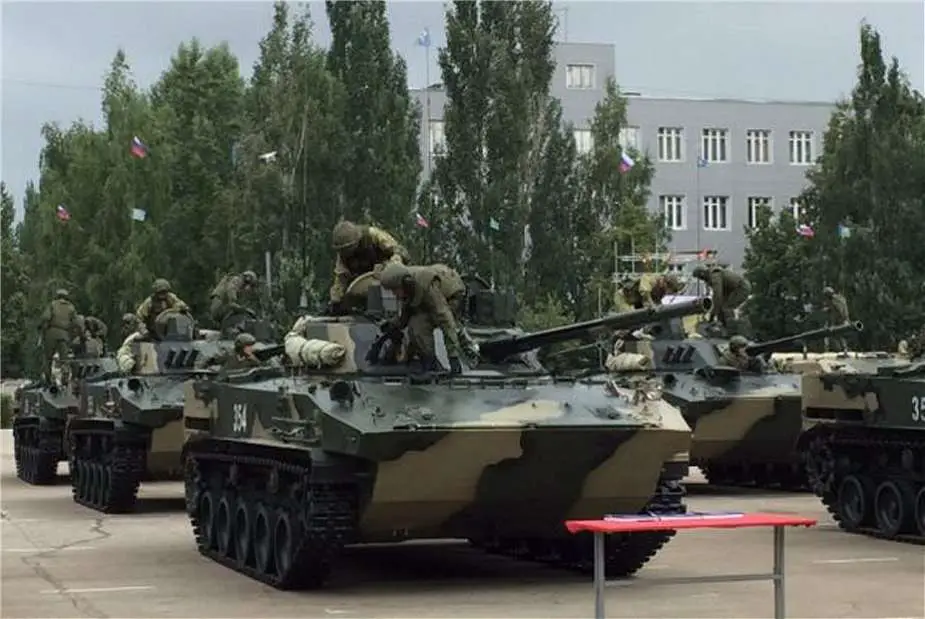On November 30, 2023, the British Army Intelligence Services revealed that the Russian military had deployed its newly formed 104th Guards Airborne Division (104GAD) for the first time in Ukraine. Intelligence reports suggest that this division is currently assembling in the Kherson Oblast region
Follow Army Recognition on Google News at this link

The 104th Guards Airborne Division is equipped with the latest generation of tracked airborne IFVs BMD-4M. (Picture source Russian MoD)
The reactivation of the 104 GAD (Guards Airborne Division), announced earlier in August 2023 by Colonel General Mikhail Teplinsky, Commander of the Russian Airborne Forces, marks a notable expansion in Russia's military capability in the region. This reactivation process has involved the reestablishment of the 104th Air Assault Division, originally the 31st Brigade, and the integration of the 31st Guards Airborne Brigade under its command. Furthermore, the restructuring includes the addition of the 119th and 299th Airborne Regiments into the existing 106th and 98th Airborne Divisions.
With the inclusion of the 104 GAD, the Russian Airborne forces (VDV) now command five divisions, expanding their operational reach and capabilities. However, there are concerns about the level of training and preparedness of this new division. Sources indicate that the 104 GAD may not meet the historically high standards of the VDV, raising questions about its effectiveness in combat.
General Colonel Mikhail Teplinsky, besides his primary role as the overall commander of the Russian Airborne Troops, will likely pay close attention to the performance of the 104 GAD in Kherson, given its strategic importance and the division's recent formation. The deployment of this division is expected to have significant implications for the ongoing military dynamics in the region.
The Russian Airborne Troops, known as the VDV, form a crucial and dynamic segment of Russia's military, renowned for their agility and elite training. The military powedr of the VDV is estimated to be between 35,000 and 45,000 soldiers. This figure, however, is prone to change due to various factors such as military reforms and recruitment strategies.
Organized into several distinct units, the VDV is equipped to handle a variety of military operations. Its primary combat force consists of airborne divisions, which are the backbone of the VDV. These divisions are outfitted with specialized airborne infantry vehicles and artillery, making them capable of performing a wide spectrum of operations including deep airborne assaults and rapid deployment missions.
In addition to the airborne divisions, the VDV includes special-purpose brigades. These brigades are similar to special forces, focusing on critical tasks like reconnaissance and direct action. They are particularly adept at operating behind enemy lines, showcasing a diverse skill set in both combat and non-combat operations.
The overall structure of the VDV allows for high mobility and rapid deployment capabilities, making it a key strategic asset in the Russian military apparatus. Each unit within the VDV is self-sufficient and capable of conducting independent operations, reflecting the versatile and dynamic nature of this elite force.
Main combat vehicles of the VDV forces include T-72B3 and T-72B3M MBTs (Main Battle Tanks), BTR-82AM APCs (Armored Personnel Carriers), BTR-D, BTR-MD and BTR-MDM tracked APC, and IFVs (Infantry Fighting Vehicles) BMD-1, BMD-2, BMD-3 and BMD-4M.
News Russia Ukraine War















